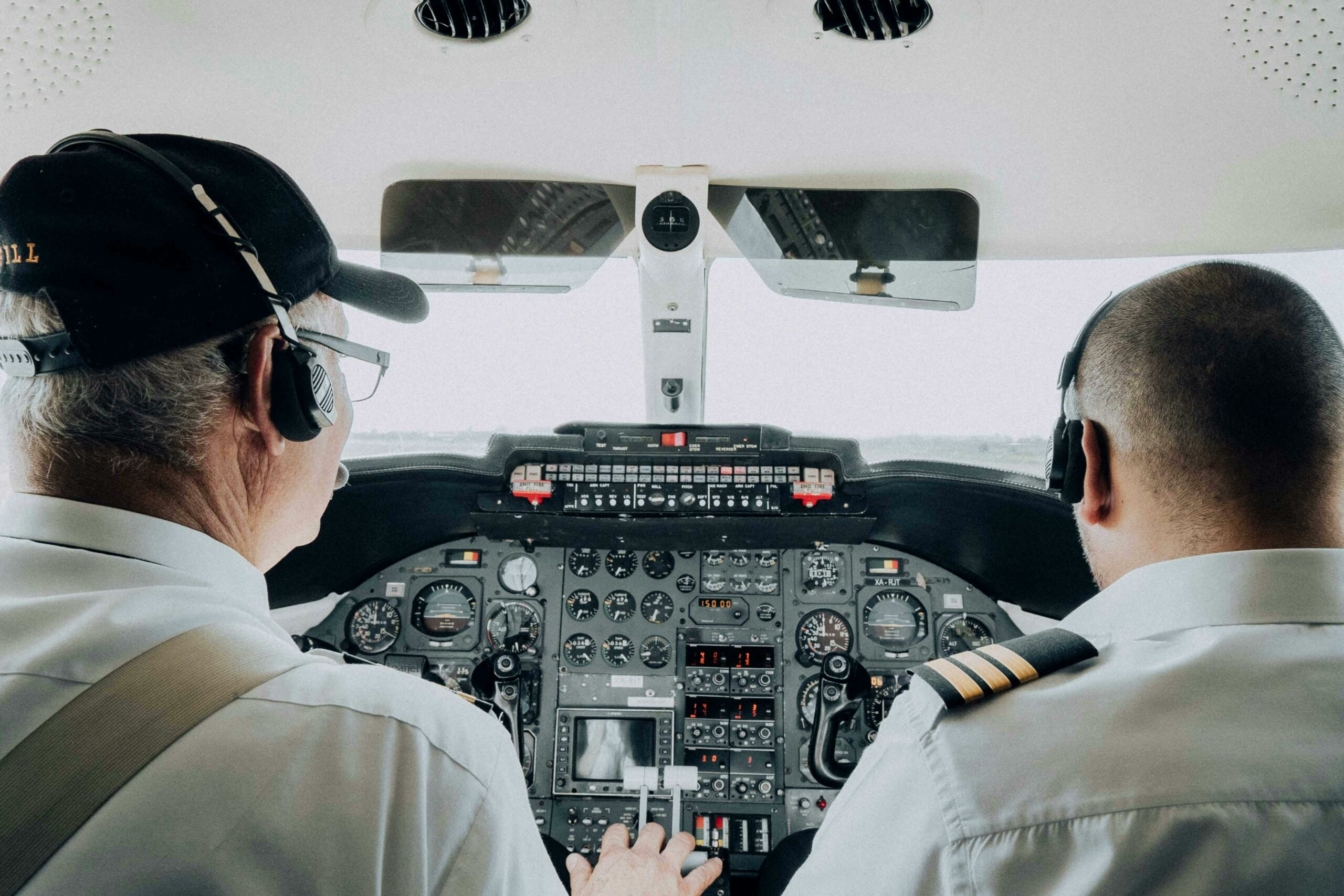Airplane Food: A Comprehensive Guide to the Best and Worst In-Flight Meals
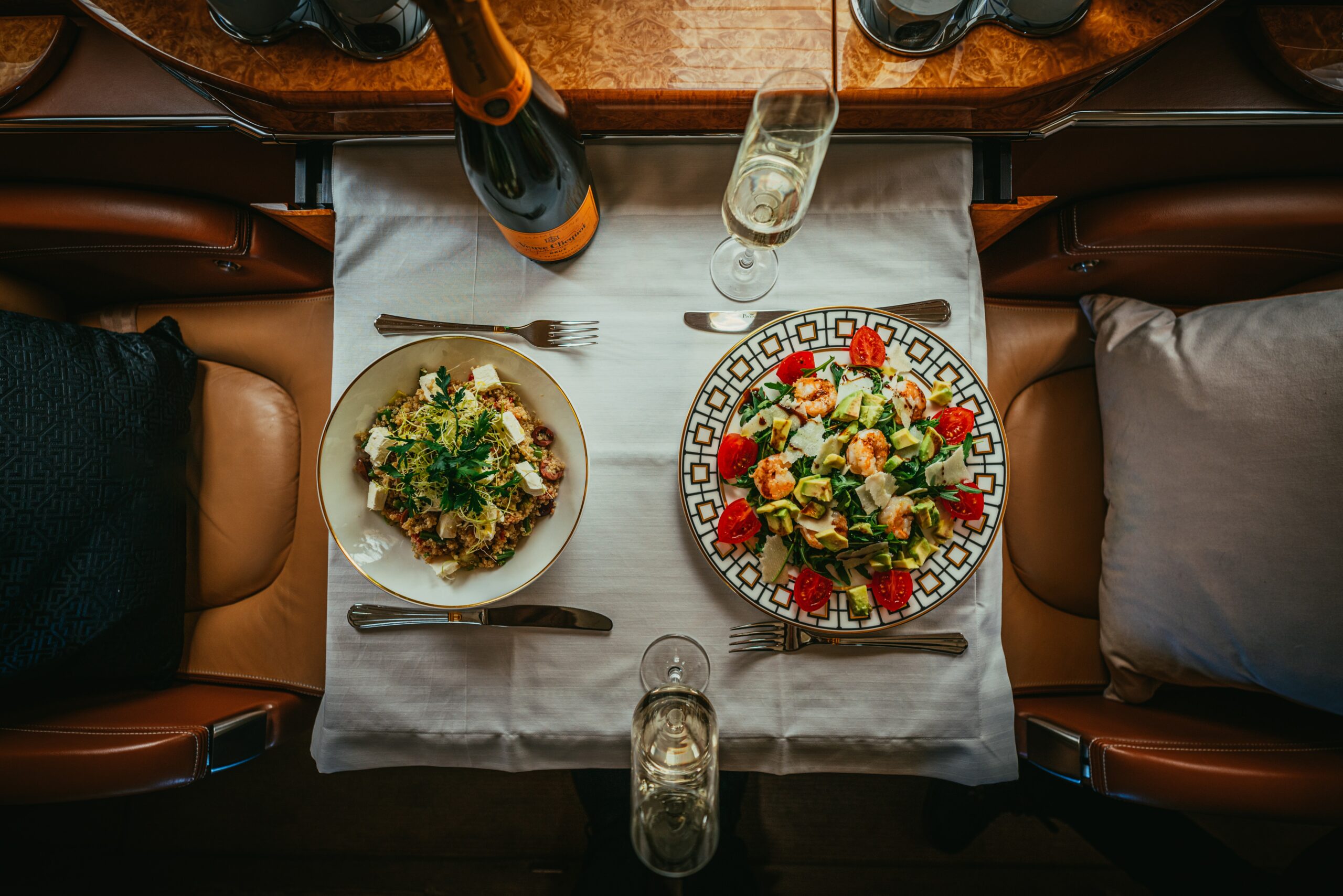
Airplane food has long been a subject of debate among travelers. Some people love it, while others loathe it. Regardless of how one feels about it, it is an integral part of air travel. With airlines striving to provide better dining experiences, the quality of airplane food has improved significantly over the years.
The Good: Airlines have started to focus on providing healthy and delicious meals to their passengers. Many airlines offer a range of options, including vegetarian, gluten-free, and low-calorie meals. In addition, some airlines have partnered with renowned chefs to create unique and flavorful dishes. The quality of the ingredients has also improved, with airlines sourcing fresh produce and high-quality meats.
The Bad: Despite the improvements, airplane food still has its drawbacks. One of the biggest issues is the lack of space. Airlines have limited space to store food, which means that meals are often pre-packaged and reheated. This can result in meals that are overcooked or lacking in flavor. In addition, some airlines have cut back on the quantity of food provided, leaving passengers feeling hungry.
The Tasty: Despite the challenges, there are some airlines that have managed to provide tasty and satisfying meals. Emirates, for example, is known for its excellent food, with a menu that includes dishes such as Arabic mezze and lamb biryani. Singapore Airlines is another airline that is renowned for its food, with a range of options that cater to different dietary requirements.
Historical Evolution of Airplane Food
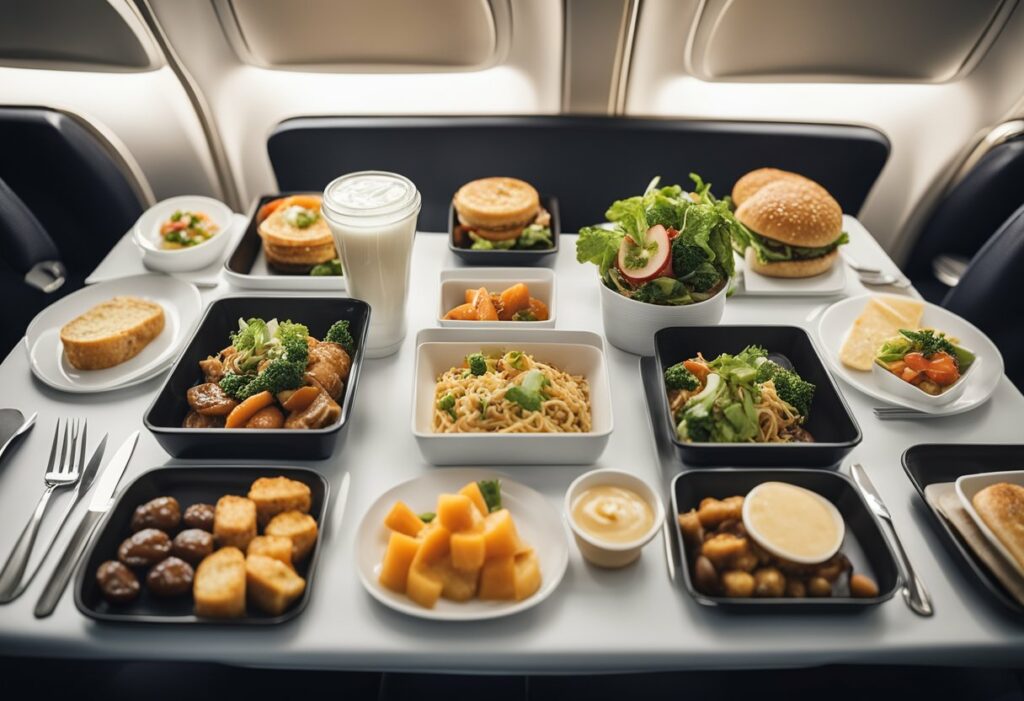
Airplane food has come a long way since the first commercial flight in 1914. In the early days of air travel, passengers were served elaborate meals that included multiple courses, fine china, and silverware. However, as air travel became more accessible to the masses, airline meals evolved to accommodate the needs of economy class passengers.
From Luxury to Economy
In the 1950s and 1960s, air travel was still considered a luxury, and airlines competed to offer the best in-flight meals to their first-class passengers. American Airlines was the first airline to introduce a full meal service in 1958, featuring steak, lobster, and other gourmet dishes. Lufthansa followed suit in 1960, offering a five-course meal service on its transatlantic flights.
However, as air travel became more affordable, airlines began to offer less elaborate meals to economy class passengers. In the 1980s, British Airways introduced a “buy-on-board” program, where passengers could purchase snacks and meals during the flight. Delta Airlines followed suit in the 1990s, offering a similar program on its domestic flights.
Notable Airline Meal Milestones
Over the years, there have been several notable milestones in the evolution of airline meals. In 1946, Cathay Pacific became the first airline to offer a choice of meals to its passengers. In 1987, Hawaiian Airlines introduced the first vegetarian meal option on its flights.
In recent years, airlines have been experimenting with new ways to improve the in-flight dining experience. Some airlines, such as Delta and United, have partnered with celebrity chefs to create unique and flavorful menus. Others, such as Air France and Qantas, have introduced in-flight dining experiences that simulate a restaurant setting.
Overall, the evolution of airline meals reflects the changing needs and expectations of air travelers. While first-class passengers may still enjoy gourmet meals and fine dining, economy class passengers are more likely to be offered simple, yet satisfying, meals and snacks.
Sensory Science in the Sky
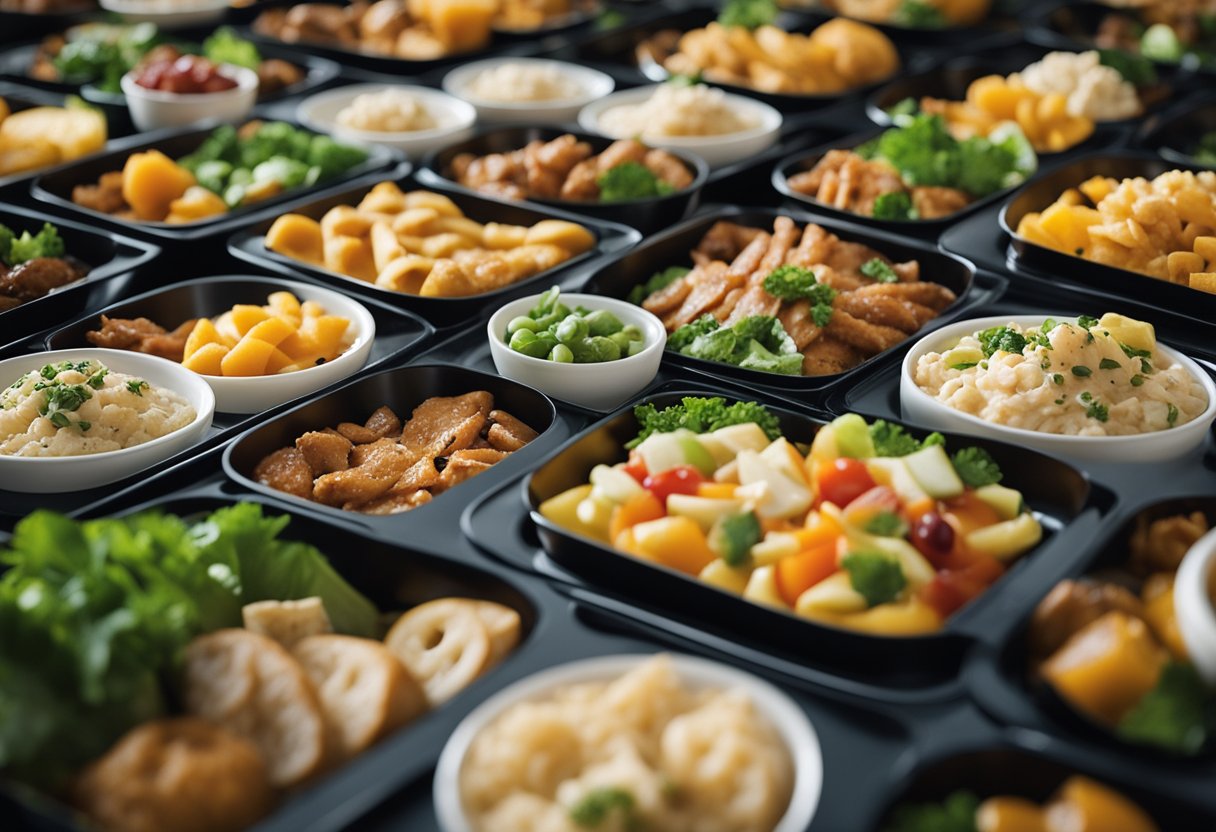
Airplane food has a reputation for being bland and unappetizing. However, there is more to it than just the taste. Sensory science plays a crucial role in understanding how our senses are affected at altitude.
Taste Bud Challenges at Altitude
The sense of taste is greatly affected by the low cabin pressure and dry air at high altitudes. The reduced air pressure numbs the taste buds, making food taste less flavorful. This is why airlines often add more salt and sugar to their dishes to compensate for the lack of taste.
However, this can lead to another problem. The umami taste, which is often described as a savory and meaty flavor, is more difficult to detect at altitude. This is because umami taste buds are more sensitive to humidity and cabin pressure. Therefore, it is important for airlines to balance the flavors and not rely too heavily on salt and sugar.
The Impact of Dry Cabin Air
Dry cabin air is another challenge for airplane food. The low humidity levels can cause food to dry out quickly, making it less appealing and more difficult to chew. This is why airlines often add sauces and gravies to their dishes to keep them moist.
The dry air can also affect the sense of smell, which is closely linked to the sense of taste. The lack of moisture in the air can make it more difficult for aromas to travel through the nasal passages, reducing the ability to detect flavors.
Overall, sensory science plays a crucial role in understanding how our senses are affected at altitude. Airlines must balance the flavors and textures of their dishes to create a satisfying dining experience for passengers. By understanding the challenges of low cabin pressure and dry air, airlines can create meals that are not only tasty but also enjoyable to eat.
The Culinary Science of Airplane Food
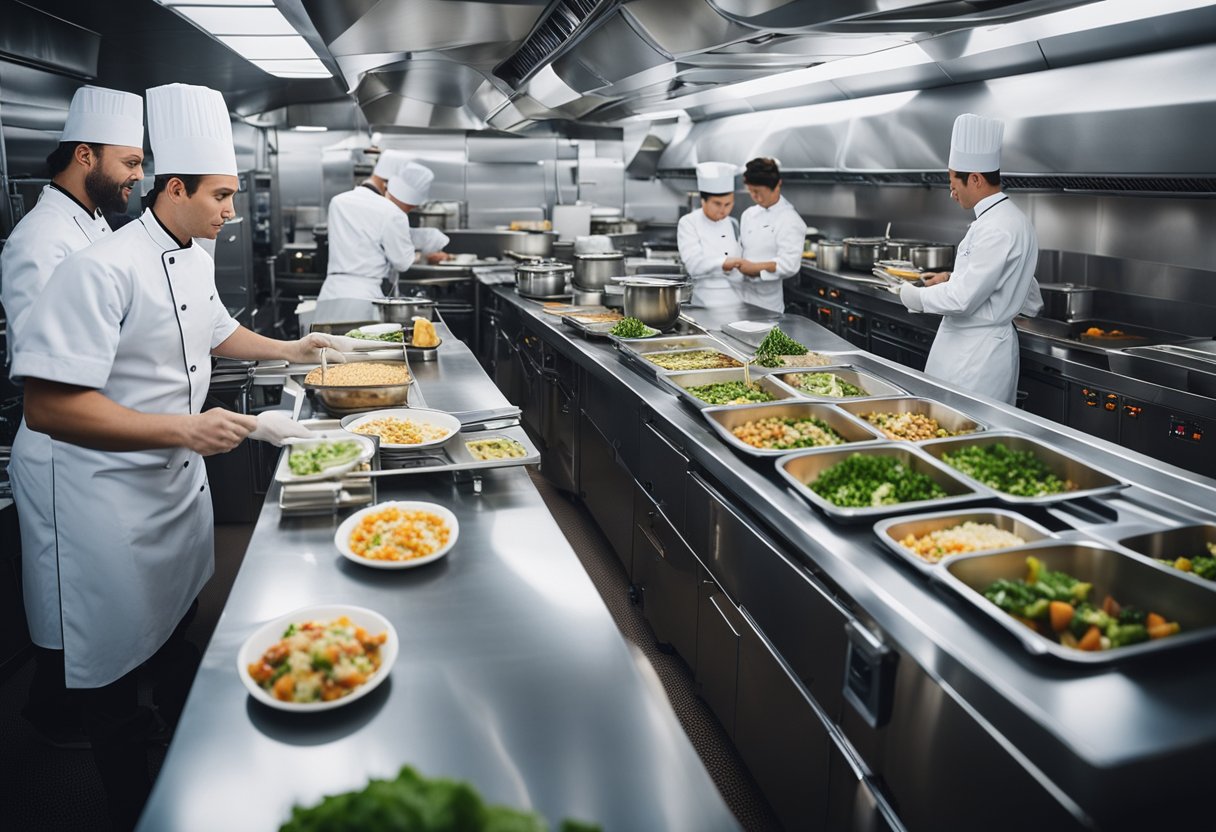
Airplane food has a reputation for being bland and unappetizing, but the culinary science behind it is actually quite fascinating. Chefs who specialize in high-altitude cooking must consider a variety of factors when selecting ingredients and developing recipes that will taste good at 35,000 feet.
Selecting Ingredients for High-Altitude Cooking
One of the biggest challenges of cooking at high altitudes is the effect it has on the taste buds. The dry air and low pressure can cause people to experience a decreased sense of taste and smell, which means that flavors must be more intense and pronounced in order to be noticeable.
To combat this, chefs often use ingredients that are naturally rich in umami, such as tomatoes, mushrooms, and parmesan cheese. These ingredients have a savory, meaty taste that can help to enhance other flavors in the dish.
Another consideration when selecting ingredients is the fact that the air pressure on an airplane can cause food to cook differently than it would on the ground. For example, water boils at a lower temperature at high altitudes, which means that it takes longer to cook pasta or rice. Chefs must take this into account when developing recipes to ensure that the final product is cooked properly.
The Role of Seasonings and Sauces
Seasonings and sauces are also important components of airplane food. They can help to add flavor and moisture to dishes that might otherwise be dry and unappetizing.
Chefs often use ginger and garlic in their recipes, as these ingredients have a strong, pungent flavor that can help to cut through the blandness of airplane food. Fresh herbs like basil, thyme, and rosemary can also be used to add a burst of flavor to dishes.
One popular beverage that is often served on airplanes is tomato juice. The acidity and saltiness of the juice can help to stimulate the taste buds and make other flavors in the meal more noticeable.
Overall, the culinary science of airplane food is complex and requires a great deal of knowledge and skill to master. By selecting the right ingredients and using seasonings and sauces strategically, chefs are able to create dishes that are both flavorful and satisfying, even at 35,000 feet.
Airline Catering Operations
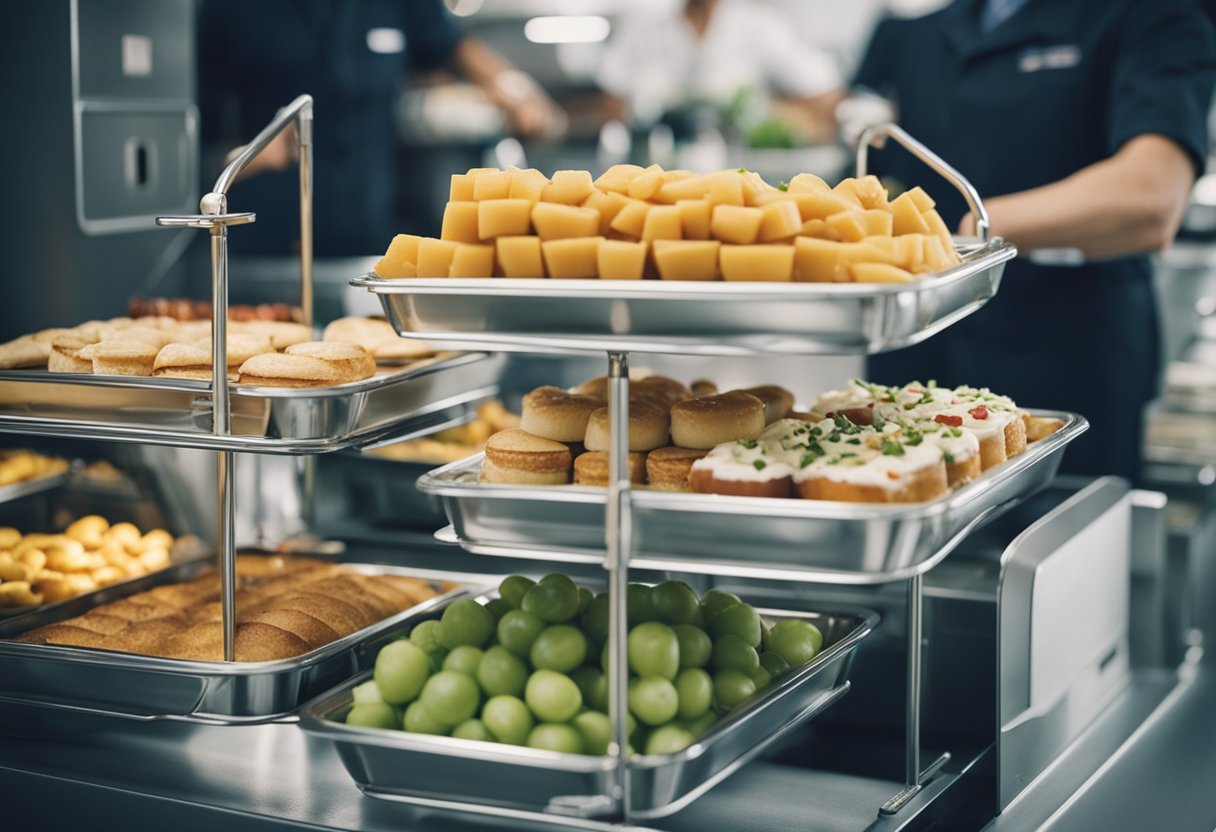
Airline catering operations involve a complex process of meal planning, logistics, and collaboration with airline chefs. Airline caterers are responsible for preparing and delivering meals to airlines, while airline chefs are responsible for creating menus and ensuring that the food meets the airline’s standards.
Meal Planning and Logistics
The meal planning process involves selecting the appropriate foods and beverages based on the airline’s preferences, budget, and dietary restrictions. Airline caterers work closely with the airline to ensure that the meals are delivered on time and meet the airline’s quality standards.
To ensure that the meals are delivered fresh and on time, airline caterers use advanced logistics systems. The Fraunhofer Institute for Building Physics has developed a system that uses sensors to monitor the temperature and humidity of the food during transportation. This helps to ensure that the food is delivered in the best possible condition.
Collaboration with Airline Chefs
Airline chefs play a crucial role in ensuring that the food meets the airline’s standards. They work closely with the airline caterers to create menus that are both appealing and nutritious. The meals are designed to meet the dietary needs of passengers, while also taking into account the preferences of the airline.
Airline chefs are constantly experimenting with new ingredients and cooking techniques to create innovative and tasty meals. Condé Nast Traveler has recognized some airlines for their exceptional culinary offerings, such as Emirates and Singapore Airlines.
In conclusion, airline catering operations are a complex process that involves careful planning, logistics, and collaboration between airline caterers and chefs. By working together, they are able to provide passengers with meals that are both delicious and nutritious.
Passenger Preferences and Trends
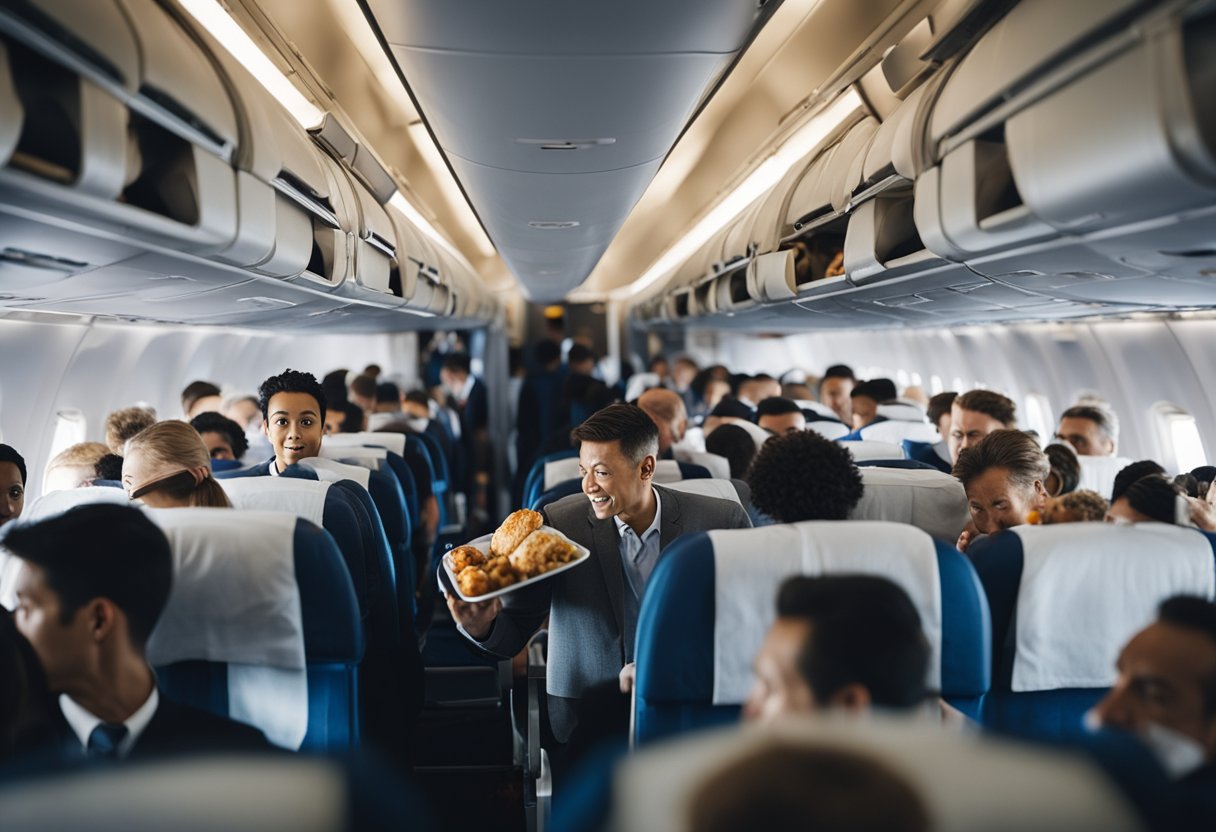
Passengers’ preferences and trends when it comes to airplane food are constantly evolving. Airlines are trying to keep up with the changing demands of their customers, offering a variety of options to cater to different dietary needs and cultural preferences. In this section, we will discuss some of the most recent trends and preferences among travelers.
The Demand for Healthier Options
One of the most significant trends in recent years has been the increasing demand for healthier options. Many travelers are looking for meals that are low in calories, fat, and sodium. They are also interested in vegetarian, vegan, and gluten-free options. Airlines have responded by offering more salads, fresh fruits, and grilled meats. They are also partnering with healthy food companies to provide nutritious snacks and meals.
Cultural and Regional Variations in Airplane Cuisine
Another trend in airplane food is the increasing emphasis on cultural and regional variations. Airlines are recognizing that passengers are interested in trying local cuisine, and they are incorporating more regional dishes into their menus. For example, Air France offers lobster on their flights from Paris to New York, and American Airlines serves barbecue on their flights from Dallas to Seoul. This trend is also evident in the increasing popularity of fast food chains in airports, which offer a taste of local cuisine to travelers.
In conclusion, airlines are responding to the changing demands of their customers by offering a variety of options to cater to different dietary needs and cultural preferences. From healthier options to regional variations, passengers have more choices than ever before when it comes to airplane food.
Class Distinctions and Dining Experiences
Economy vs. Business vs. First Class Menus
Airplane food has long been a topic of conversation among travelers, with opinions ranging from disgust to delight. However, one aspect that often goes overlooked is the difference in menus between the various classes of service.
In economy class, meals are typically pre-packaged and mass-produced, with limited options and low-quality ingredients. Business class meals, on the other hand, are often prepared fresh and with higher-quality ingredients, with a wider variety of options to choose from. First class takes it to another level, with gourmet meals prepared by top chefs and personalized service.
One example of this distinction is Emirates Airlines, which offers a range of menus depending on the class of service. Economy class passengers can choose from a selection of pre-packaged meals, while business class passengers can enjoy multi-course meals with a wider variety of options. First class passengers can indulge in a range of gourmet dishes, with personalized service from a dedicated chef.
The Future of In-Flight Dining
As airlines look to improve the overall passenger experience, in-flight dining is an area that is receiving increased attention. Some airlines are experimenting with new technologies, such as 3D printing and virtual reality, to enhance the dining experience.
For example, Air New Zealand has partnered with 3D printing company, Zenith Tecnica, to create a range of 3D-printed components for its in-flight service. This includes coffee cups, which are designed to fit perfectly into the airline’s existing cup holders, as well as foldable cocktail trays.
Virtual reality is another technology that is being explored by airlines. In 2019, British Airways launched a trial of a virtual reality headset, which allows passengers to watch movies and TV shows in 3D. The airline is also exploring the potential of using virtual reality to enhance the dining experience, by allowing passengers to view and select their meal choices in a virtual environment.
Overall, as airlines continue to invest in improving the passenger experience, in-flight dining is an area that is likely to see continued innovation and improvement.
Beverage Service at 30,000 Feet
When it comes to flying, beverage service is an essential part of the in-flight experience. Whether you are looking to quench your thirst or take the edge off your nerves, choosing the right drinks for altitude is crucial. Here are some things to keep in mind when it comes to beverage service at 30,000 feet.
Choosing the Right Drinks for Altitude
The high altitude of a flight can have a significant impact on your sense of taste and smell. As a result, many airlines have adjusted their beverage options to cater to the unique needs of passengers in the air. When choosing a drink, it is essential to consider the following:
- Water: Staying hydrated is crucial when flying. As the air inside the cabin is dry, it is recommended to drink plenty of water to avoid dehydration. Some airlines offer bottled water, while others provide water from a dispenser. It is important to note that tap water on a plane may not be safe to drink.
- Gas: Carbonated beverages like champagne, ginger ale, and soda can taste different at altitude due to the change in air pressure. As a result, many airlines have opted to serve these drinks in smaller cans or bottles to prevent them from going flat.
- Alcohol: While it may be tempting to indulge in a drink or two, it is important to remember that alcohol can have a more significant effect on your body at altitude. It is recommended to limit your intake and opt for non-alcoholic options if possible.
Alcohol and Non-Alcoholic Options
When it comes to in-flight drinks, there are a variety of options available. Here are some of the most popular choices:
- Tomato Juice: Many people crave tomato juice when flying, and for good reason. The savory flavor and high salt content can help to combat the effects of altitude.
- Bloody Marys: A popular cocktail choice on flights, the combination of tomato juice, vodka, and spices can be a refreshing and satisfying option.
- Beer: While many people enjoy a cold beer on a flight, it is important to note that the carbonation and alcohol content can have a more significant effect at altitude.
- Non-Alcoholic Options: For those looking to avoid alcohol, there are a variety of non-alcoholic options available, including soda, juice, and water.
Remember, when it comes to beverage service at 30,000 feet, wetter is better. Staying hydrated is crucial when flying, so be sure to drink plenty of water throughout your flight. With a little bit of knowledge and the right drink choices, you can make the most of your in-flight experience.
The Role of Packaging and Presentation
When it comes to airplane food, packaging and presentation play a crucial role in the overall experience. In this section, we will explore the impact of packaging and presentation on the quality of meals, foods, sauces, oils, and vinaigrette served on flights.
Environmental Considerations
With the growing concern for the environment, airlines are now opting for more sustainable packaging options. Many airlines have started using biodegradable and compostable packaging materials to reduce waste and minimize their carbon footprint. These eco-friendly packaging options not only benefit the environment but also enhance the overall dining experience by making it more enjoyable and guilt-free.
Enhancing the Aesthetic Appeal
The way food is presented can significantly impact its taste and appeal. Airlines are now focusing on enhancing the aesthetic appeal of their meals by using creative and visually appealing packaging and presentation techniques. For instance, some airlines are using compartmentalized trays to separate different food items and prevent them from mixing. Others are using colorful and vibrant packaging to make their meals more visually appealing.
Moreover, airlines are also using high-quality cutlery, napkins, and tableware to enhance the dining experience. This attention to detail not only makes the food look more appetizing but also adds a touch of luxury to the overall experience.
In conclusion, packaging and presentation play a vital role in the overall dining experience on flights. By using eco-friendly packaging options and enhancing the aesthetic appeal of their meals, airlines can significantly improve the quality of their meals, foods, sauces, oils, and vinaigrette.
Future Innovations in Airplane Food
Technological Advancements
As technology continues to advance, the airline industry is exploring new ways to improve the quality and variety of airplane food. One such innovation is the use of 3D printing technology to create customized meals for individual passengers. This technology allows for precise portion control and can accommodate dietary restrictions and preferences.
Another promising advancement is the use of smart packaging that can monitor and regulate the temperature and humidity of food during flights. This technology can help ensure that food stays fresh and safe to eat, even on long-haul flights.
Sustainability and Waste Reduction
In recent years, there has been a growing focus on sustainability and waste reduction in the airline industry. This has led to innovations in airplane food that aim to reduce waste and minimize the environmental impact of air travel.
One such innovation is the use of edible packaging made from natural materials like seaweed or starch. This type of packaging is biodegradable and can be safely consumed along with the food it contains, reducing waste and minimizing environmental impact.
Additionally, airlines are exploring ways to reduce food waste by implementing more accurate forecasting and inventory management systems. By accurately predicting passenger demand and adjusting food production accordingly, airlines can reduce the amount of food that goes to waste.
Overall, the future of airplane food looks promising, with technological advancements and a focus on sustainability driving innovation in the industry. As air travel continues to grow, it is important that the airline industry continues to prioritize the quality and sustainability of airplane food.

